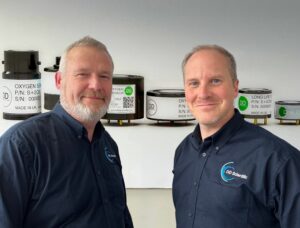What can clean air startups do to maximise growth and investment?
As a follow-up to his first article ‘Why aren’t there more clean air startups?’ Paul Finch, Co-Founder of Growth Studio shares some wisdom on how startups can gain and maintain momentum.
Here’s our top tips for startups focused on environmental improvements and planet health secure investment.
Always be fundraising – even when you’re not.
Don’t start fundraising when you start to need capital. Investors backing early stage businesses are ultimately backing you – the founder. As such, you should always be building relationships (and lists of) Angels, Syndicates, VCs and investors. Keep in touch with updates, insights, personalised titbits, so when you start to need investment, you’ve built rapport, they know your business, and it’s an easier ask.

Plan ahead.
Be prepared to jump on any investment opportunity quickly; keep your data room updated, pitch decks fresh, revenue and growth numbers on hand. Aim to give investors what they need quickly, and have everything they need for due diligence pre-prepared.
Keep in touch with the rejections.
You’ll have been told “you’re too early for us” a million times, and sometimes you generally are. Keep in touch with the people who rejected you; circumstances change, so keep in touch with your rejections, and don’t be afraid to re-engage with them.
Be focused on your outreach.
Spend the time to work out which investors you should approach; making sure you align to their thesis, principles, culture, portfolio, and don’t waste their time (or yours). Take the time to make a personalised approach rather than a generic cold email (and if you can, try and engineer a warm intro from a portfolio founder). Build your hit-list of investors, starting with your least-favourites first (make your mistakes with them and consider their feedback). Aim to be pitch-perfect by the time you’re pitching to the A list)
Your ‘Why Now” is more important than ever.
Be clear how you have adapted, or can adapt to the current economic and geopolitical challenges. Build confidence with investors by tackling the challenges now – and potential ones – in the future; present to them what you see as risks, how you have pre-empted them, and what you are doing to build resilience.
Your core team is a big part of this resilience; be clear how the people in the business are competent to weather the storm, can open more doors, and grow the business in the current climate.
Consider alternative finance to keep you afloat.
The government’s fantastic R&D Tax Credits scheme is frequently misunderstood and criminally underused; speak to a specialist and see if you can claim any money back from your product or IP development (you often can). Look for Innovate UK grants, non-equity accelerators, corporate venture schemes, syndicates. Sometimes alternative funding is a quicker, easier process than traditional fundraising.
Know your numbers inside out.
Customers. Leads. Revenue. Profit. Attrition rates. Conversion rates. Costs and losses. Know your numbers inside out so you can fluently talk to investors about where the opportunities lie in your sector and business, what your priorities are to improve sales, profit, and reduce costs.
Double down on your traction and validation.
Prove you’re a sustainable scalable business using more data, hard facts, and numbers. Demonstrate you have the indicators of product market fit with data points; think about how you can prove to an investor that people need your product, want your product, will pay for your product, and stay with your product.
Spend time selecting the right KPIs to know that you’re making and selling what the market really wants. Prove it.
Show investors your traction with customer interviews, leads or pre-registrations, pilots, likelihood-to-recommend, sales, basket size, re-purchase or engagement rates.
Be proud of any testimonials you have, any advisors on your board, and investors from your industry that have invested in you (it all increases your market credibility).
Help them de-risk their investment by proving you are on a strong, proven, data-driven growth trajectory.
Remember: “Make things people want, not make people want things”
Sell more.
Seriously. Hustle, pound the pavements, get on the phone. Prove you are capable of securing sales (or pre-sales) in the harshest of environments. You aren’t selling anywhere near hard enough or aggressively enough as you think.
As a side benefit, get selling from day one; you’ll get better customer feedback than you can ever imagine.
Be conservative.
Be more conservative with your numbers. Assume you’ll sell half than you think, spend twice than you’re intending to, and double or triple the time you think you’ll need to raise. Then look at how you can operate, survive and thrive in the conditions.
Be attractive.
It’s a risky environment, money is tight, and investors are – to a large extent – human.
Think how you can not only protect their money, but actively increase it.
Think about how you can make your startup the most attractive, interesting, wanna-have startup out there. Make them want you and fight for you.
Spread the love.
Be nice. Make introductions between investors and other founders you know. Listen. The startup and investor world is a small one, and your network and connections are probably
















